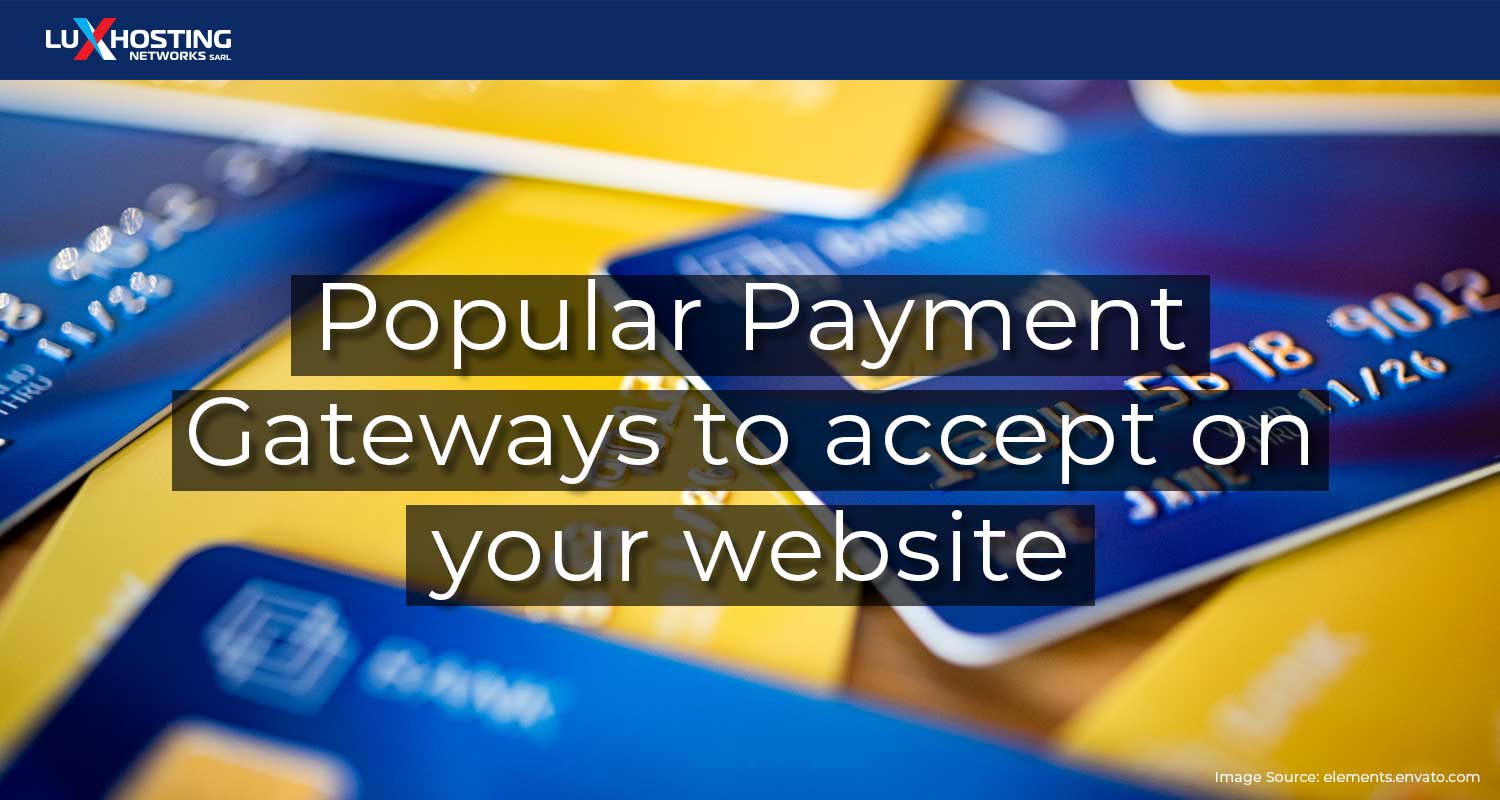There is no need to tell you that a must-have when building your website is eCommerce. In 2016, 46% of all cart abandonment happened at the payment stage, and by 2020, overall cart abandonment stood at 88%. Take some time to let that sink it… Now that the shock has passed, we will help you to prevent this from happening to your website sales. We will explain features to look for in a payment gateway, as well as tell you about five of the most popular payment gateways. Let’s get immediately into it.
What is a payment or website gateway?
Website gateways allow website owners to accept payments from customers just as if the purchase were made at a cashier in a physical store. In-store, the customer may feel a greater sense of personal responsibility for their credit or debit card. Website gateways consider this and are designed to provide the highest level of security that can give your customers the peace of mind they need to complete their purchase.
What to look for in a website payment gateway
There are many website gateways, and you will need to choose the one that best suits your business needs. What are some of the features to bear in mind when considering a website gateway?
1. Payment security
If you have not heard of PCI DSS yet, you need to pay even closer attention. PCI DSS is simply an acronym for Payment Card Industry Data Security Standard. It is a set of guidelines and instructions that any business that accepts electronic payments must adhere to in an effort to keep customers’ data secure. While you may not need PCI DSS because you are using a website gateway, the gateway that you choose should at least have it. This will then allow you to provide a second layer of peace of mind for your customers: security tags. Always display security tags as they increase customer confidence, and ensure a purchase.
2. Reputation
Choosing a reputable website gateway is already half of the job successfully done. Displaying the security tag of a known and trusted provider strengthens customer trust, and further ensures purchase follow-through.
3. Consider transaction fees
Website gateways will attract a cost, so naturally, you should factor that into your selection process. Read the fine print carefully, because some gateways charge customers. If you think not having eCommerce options drive away customers, try surprising them with a fee at the last minute.
4. Compatibility
You need a website gateway that will seamlessly integrate with your website. In your case, our website builder comes equipped with numerous options from which you can choose, and you can always stack your gateways. Try to find out which ones customers are already using, and aim to include these. Costumers are finicky and don’t want to do anything they don’t have to, such as learning to use or signing up for a different website gateway than the one they already know. Now that you know what a website gateway is, and what to look out for when choosing the right ones for your website, we will share five of the most popular gateways with you.
5 popular website gateways
1. PayPal
PayPal is known and used worldwide so has a good reputation on its side. It works with almost all eCommerce platforms and comes with fraud protection at no extra cost. If you use PayPal Payments Pro (a paid monthly subscription), customers remain on your website while they carry out the transaction; otherwise, they are taken to a secondary payment site.
Tip: Always tell your customers if they will leave the main website during payment. This will reassure them that fraud is not involved.
Fee: 2.9% of transaction, plus $0.30 per transaction. Braintree does not charge extra for international payments.
2. Stripe
Stripe checks all our boxes, and much more. A big plus for Stripe is that it supports just over 135 currencies. This means customers do not have to worry about conversion rates. Another advantage is that it allows for third-party integrations, such as your favourite plugins and platforms. Company size is no matter as it supports from micro-businesses to larger companies, such as Google and Amazon that are actual Stripe customers. Customers can use coupons and set up recurring payments. Stripe can detect a customer’s location and device, and automatically adjust currency and layout to enhance user experience. A happy customer is one who has to do very little, which means higher conversion rates. Fee: 2.9% of transaction, plus $0.30 per transaction. International card charges are at 3.9%.
3. 2Checkout
2Checkout is great for its scalability. Do you have a small business, or need limited features from your gateway? 2Checkut allows you to use just what your needs require, but more importantly, can grow with you as your business grows and require more services. You have 15 languages and 87 currencies from which to choose. Fee: 2.9% of transaction, plus $0.30 per transaction. International transactions attract an extra $1.00 per transaction.
4. Alipay
With approximately 1.4billion citizens, China is a market to consider irrespective of your location. Also, it is becoming accessible to more persons all around the globe. You have two options of adding Alipay to your website: through the API using code (how are your coding skills?), or through a third-party, such as Stripe.
5. Skrill
Add Skrill easily to your website. Create an account with Skrill, use the secret word to activate it within your admin area (if your country is supported), and verify the account via email.
Conclusion
No matter the size or stage of your online business, you will be able to find a website gateway to suit your needs. We offer numerous options, including some not mentioned today, for you to integrate into your website. Add one to your website today. Also, you can easily pay for our easy and efficient website builder and just getting started on a brand new ecommerce site today.



